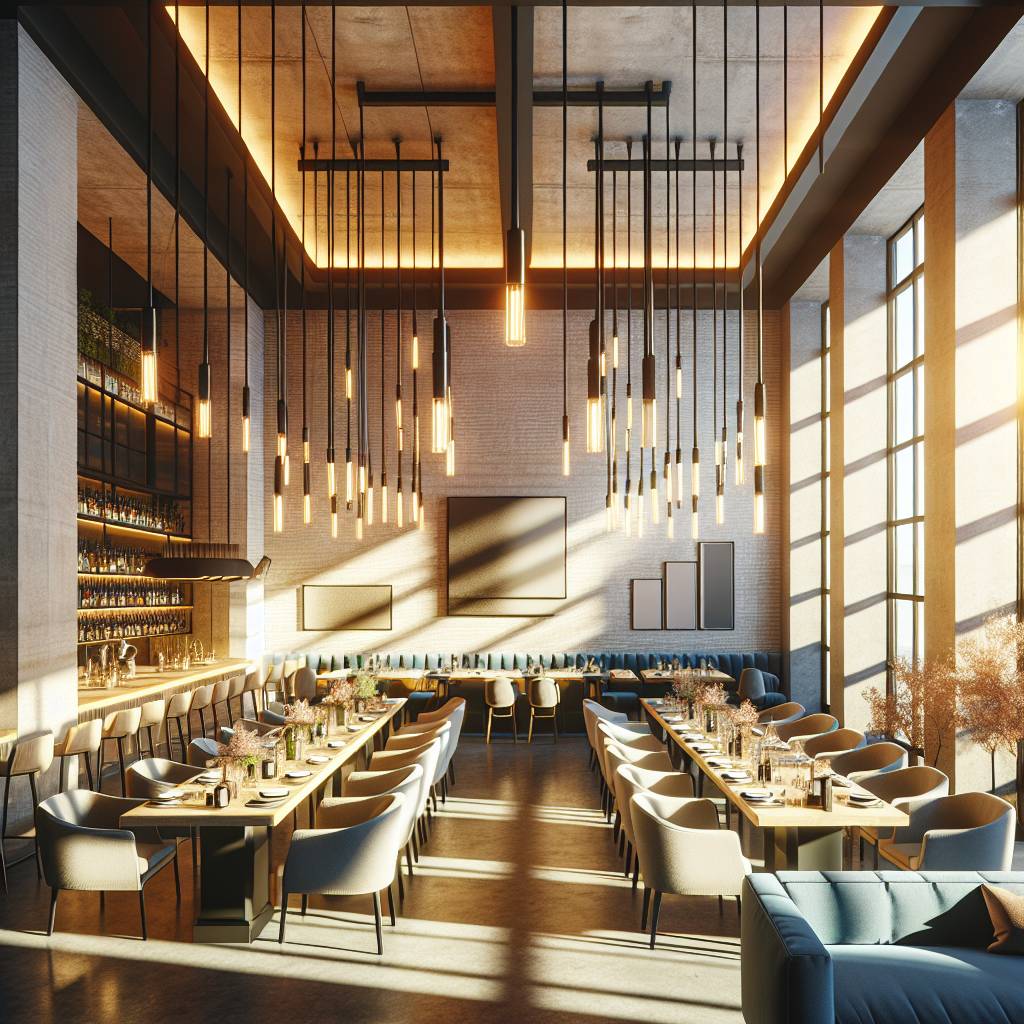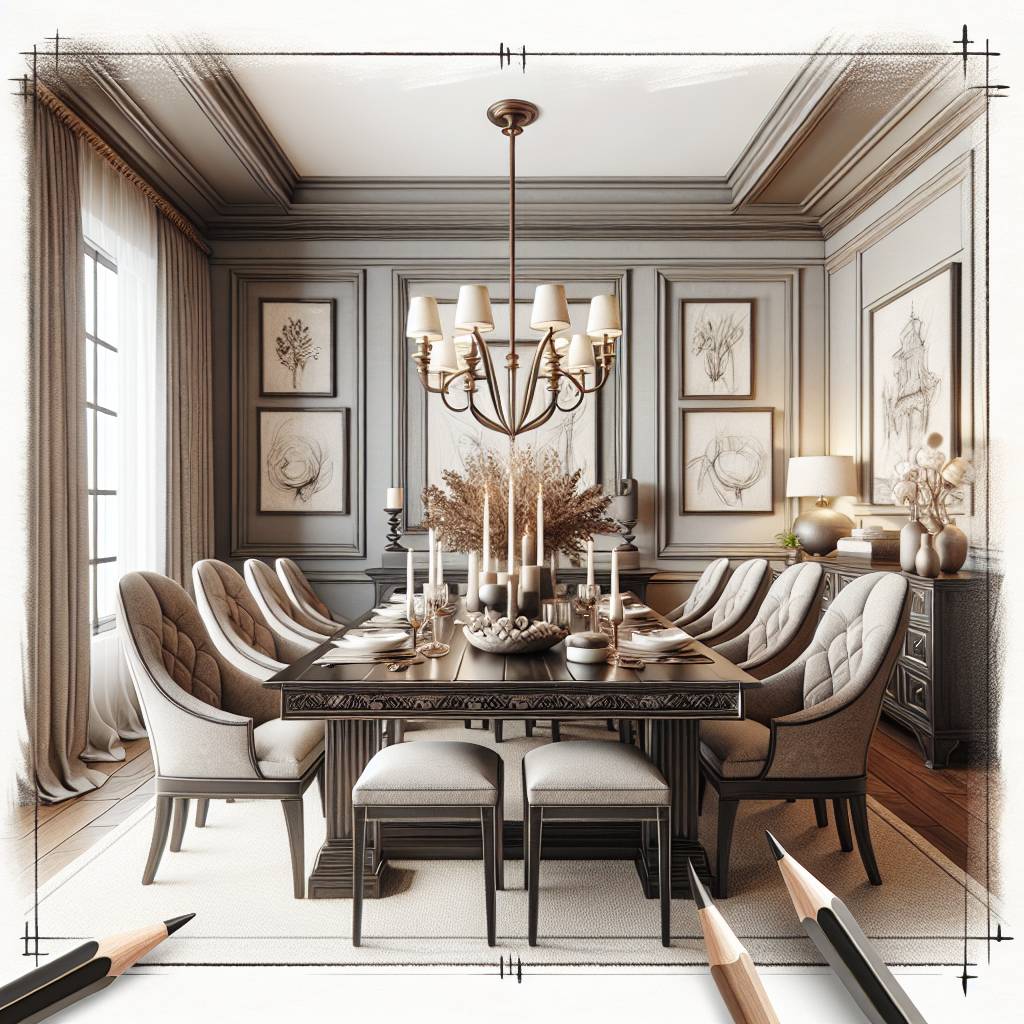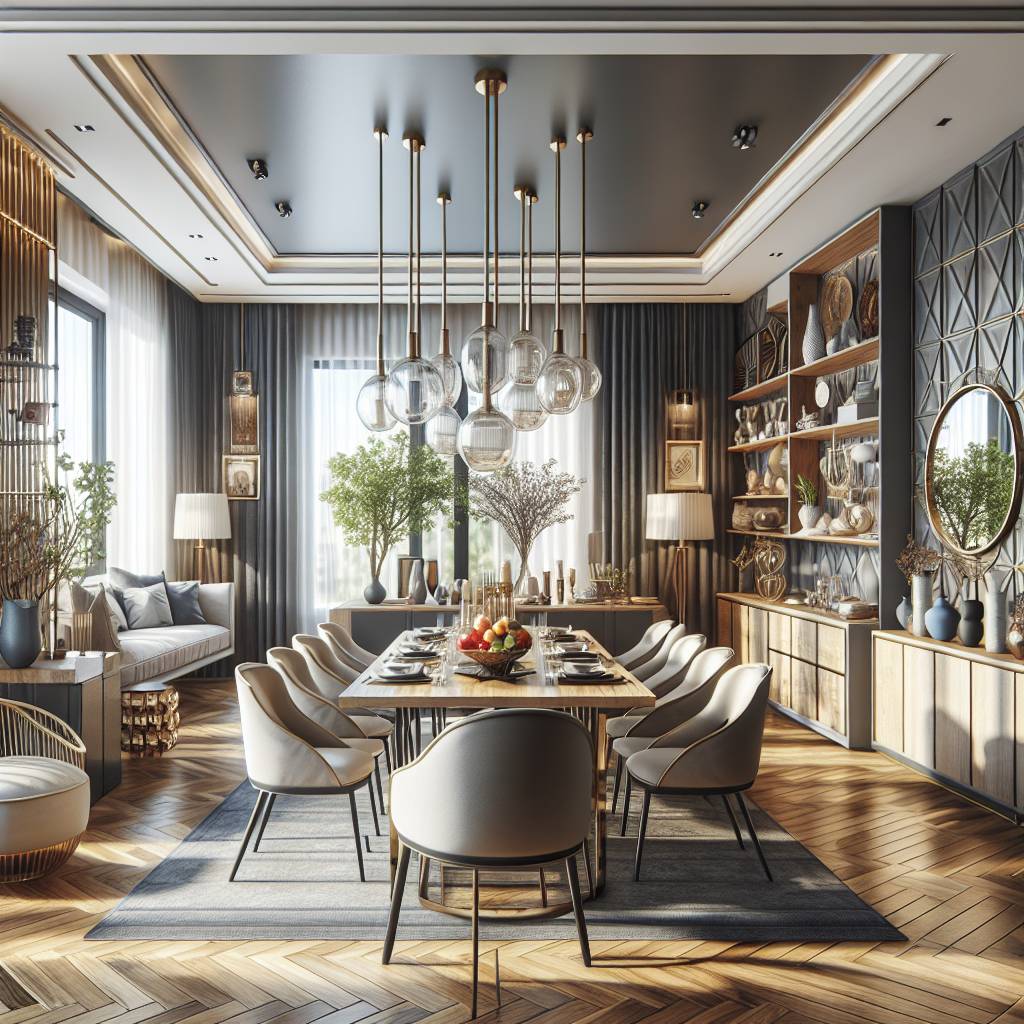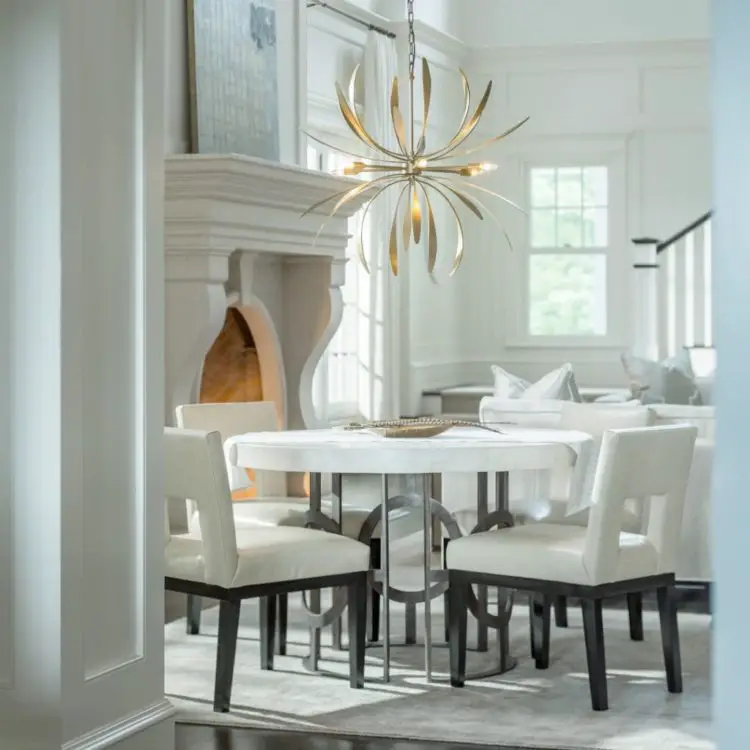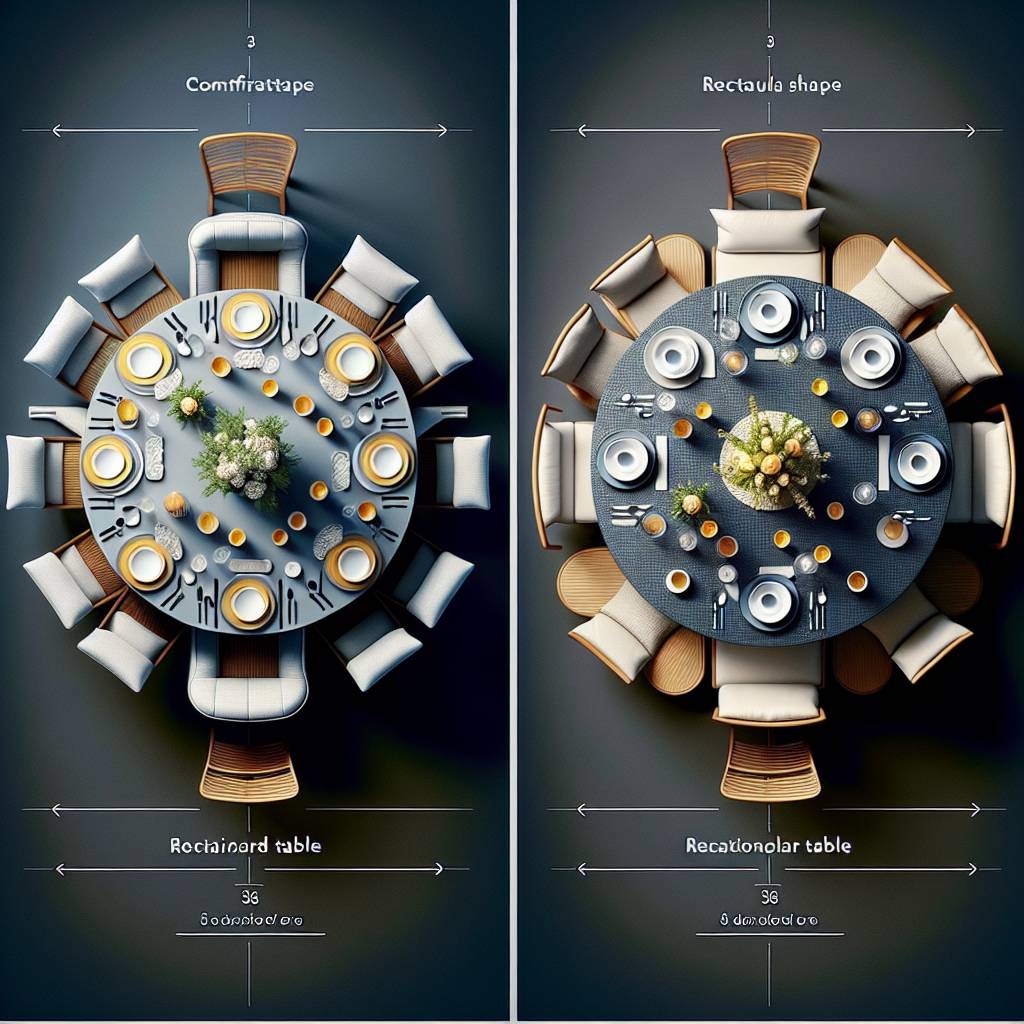In the ever-evolving landscape of interior design, creating a versatile dining space that seamlessly transitions from family dinners to remote work hub or entertaining area is essential. The key to achieving this versatility lies in adjustable incandescent lighting solutions with a wide range of color temperature for ceilings. By harnessing the power of adaptable illumination, you can transform your dining area at the flick of a switch, catering to diverse needs without compromising on ambiance. Whether it’s an intimate dinner for two or a bustling gathering with friends, adjustable lighting offers the flexibility to set the perfect mood for any occasion.
Adjustable lighting not only enhances functionality but also adds an element of visual intrigue and sophistication to your dining space. From pendant lights with dimmer switches to smart bulbs controlled by apps, there’s a myriad of options available today. Join us as we delve into the art of illuminating multi-use dining areas and discover how adjustable lighting can revolutionize your home experience.
Key Takeaways
- Adjustable lighting is crucial for multi-use dining spaces as it allows for flexibility in creating different atmospheres for various activities, such as dining, working, or entertaining.
- Layered Lighting Approach: Implementing a combination of ambient, task, and accent lighting can enhance the functionality and aesthetics of the dining area, catering to different needs and moods.
- Utilizing Dimmers: Incorporating dimmer switches provides control over the intensity of light, enabling users to adjust brightness according to specific tasks or occasions, promoting comfort and energy efficiency.
- Fixture Selection Considerations: When choosing adjustable fixtures, factors such as size, style, functionality, and pros should be carefully evaluated to ensure they complement the space and meet the diverse lighting requirements.
- Avoiding Common Pitfalls: Understanding and avoiding common lighting mistakes, such as improper fixture placement or inadequate light levels, is essential for optimizing the functionality and ambiance of the dining area.
- Staying Updated with Trends: Keeping abreast of current trends in dining space lighting can inspire innovative design choices and ensure that the space remains stylish and relevant.
Significance of Adjustable Lighting
Enhancing Ambience
Adjustable lighting is a game-changer. With different lighting options, you can create various moods and atmospheres, from intimate and romantic to bright and lively. Picture this: soft dim lights for a cozy date night or bright, vibrant lights for a lively family brunch. The right lighting has the power to elevate the overall dining experience by setting the perfect mood.
For instance:
- Soft, warm lighting can create an intimate and relaxed atmosphere for romantic dinners.
- Brighter, cooler lighting can foster a more energetic ambiance for daytime gatherings.
Versatile Dining Experiences One of the most significant pros of adjustable lighting in multi-use dining spaces is its ability to cater to diverse dining experiences within one area. Whether it’s an intimate dinner for two or a festive gathering with friends and family, having various lighting settings allows you to adapt the ambiance according to different occasions. Imagine seamlessly transitioning from an elegant evening soiree with subdued lighting to a cheerful weekend brunch with brighter illumination—all within the same space.
Consider this:
- Dimmer switches or adjustable light fixtures enable effortless transitions between formal dinners and casual get-togethers.
- Different color temperatures in LED bulbs offer flexibility in creating distinct atmospheres suitable for varied events.
Flexibility in Lighting Contributes The adaptability that adjustable lighting brings contributes significantly to creating versatile dining environments. This flexibility allows you not only to adjust the brightness but also manipulate color temperatures and even control specific areas’ focus through strategic use of light sources like lamps or pendant lights.
For example:
- By adjusting pendant light heights above different tables, you can create focused spots ideal for reading menus while maintaining an overall ambient glow.
- Incorporating dimmable wall sconces provides additional layers of light that contribute both functionally and aesthetically based on specific needs during meal times.
Lighting and Mood
Lighting plays a pivotal role in setting the mood for any dining experience. The intensity, warmth, and color temperature of lights directly influence emotions felt within a space—whether it’s relaxation, excitement, intimacy, or conviviality. It’s not just about seeing; it’s about feeling through sight and the subtle yet profound impact that carefully curated illumination has on our emotional responses during meals cannot be overstated.
Basics of Dining Room Lighting
Layering light is a crucial concept in creating adaptable lighting for multi-use dining spaces. It involves using different light sources to add depth and dimension to the room’s illumination. For instance, combining overhead pendant lights with wall sconces or floor lamps can create a dynamic and versatile lighting environment. This approach allows for adjustable lighting, making it suitable for various activities such as intimate dinners, family gatherings, or even working on projects at the dining table.
Layering light contributes to an aesthetically pleasing atmosphere by providing both ambient and task-oriented illumination. Ambient lighting sets the overall mood of the space, while task lighting serves specific purposes like highlighting artwork or aiding in reading menus. By incorporating these elements into the dining area, homeowners can ensure that their multi-use space remains practical yet visually appealing.
Types of Adjustable Fixtures
Pendant Lights
Pendant lights are a fantastic choice for adjustable lighting in multi-use dining spaces. These fixtures offer focused illumination directly over the dining area, creating an inviting and intimate atmosphere. With adjustable pendant lights, you can customize the brightness levels to suit different activities, whether it’s a cozy family dinner or a lively gathering with friends. For instance, dimming the lights during a romantic dinner can enhance the ambiance, while increasing brightness when hosting a party ensures everyone feels comfortable.
Different styles of pendant lights are available to complement various dining spaces. Whether your dining area features modern decor or has a more traditional aesthetic, there’s a pendant light design that can perfectly match the interior style. This versatility makes adjustable pendant lights an ideal choice for multi-use dining areas where different atmospheres need to be created.
Chandeliers
Chandeliers are renowned for adding elegance and sophistication to any space, making them an excellent option for multi-use dining areas. An adjustable chandelier offers flexibility in illuminating larger dining spaces by allowing you to control the intensity of light emitted. This is particularly useful when transitioning from formal dinners that require bright lighting to casual gatherings where softer illumination is preferred.
Moreover, various designs of chandeliers cater to different interior styles, ensuring that there’s an option suitable for every type of multi-use dining space. Whether it’s a contemporary setting with sleek lines and minimalist decor or a more ornate traditional environment, there’s an adjustable chandelier that complements the overall design scheme beautifully.
Wall Sconces
. These fixtures contribute not only targeted illumination but also add visual interest through their unique designs and placements on walls. By opting for adjustable wall sconces, you have greater control over how specific areas within your dining space are illuminated.
Different placement options for wall sconces allow you to create unique lighting effects based on your preferences and needs at any given time. For example, strategically positioning adjustable wall sconces near artwork or architectural features can highlight these elements while simultaneously contributing soft ambient light during meals.
Over Table Lighting Strategies
Fixture Sizing
Choosing the right fixture size is crucial. The size of the fixture directly impacts the balance and coverage of illumination in the dining area. For instance, a large round table would require a larger fixture to ensure adequate light coverage across its surface. On the other hand, a smaller table would be overwhelmed by an excessively large fixture.
Properly sized fixtures play a significant role in maintaining visual proportion within the space. When considering adjustable lighting for multi-use dining spaces, it’s important to select fixtures that complement the scale of both the room and the table being illuminated.
Height Adjustability
Adjustable heights are essential. Whether it’s an intimate dinner or a lively gathering, having flexibility in adjusting table lighting height ensures that each occasion is appropriately illuminated.
For example, during an intimate family dinner around a round table, lowering the pendant lights creates an inviting ambiance while still providing sufficient illumination for diners. Conversely, raising these lights higher above during social gatherings allows for broader light distribution across multiple areas of activity.
Flexible height options also cater to various ceiling configurations commonly found in modern homes or restaurants. This adaptability enables tailored positioning based on ceiling height and architectural features without compromising on style or functionality.
The Role of Dimmers
Mood Settings
Adjustable lighting for multi-use dining spaces plays a crucial role in setting the right mood. Dimmers equipped with pre-set mood settings allow for quick adjustments to cater to various occasions. For instance, a romantic dinner may call for soft, dimmed lighting, while a brunch gathering could benefit from brighter illumination. These pre-set options enable seamless transitions between different atmospheres without the need for constant manual adjustments.
Customizable mood settings enhance the versatility of adjustable lighting by offering tailored solutions for specific events or themes. Whether it’s an intimate family dinner or a lively social gathering, being able to adjust the ambiance through preset moods contributes significantly to creating distinct atmospheres within multi-use dining spaces. This adaptability ensures that the lighting can effortlessly complement diverse activities and preferences without requiring extensive reconfigurations.
Brightness Control
Incorporating dimmer switches provides precise control over brightness levels, allowing adaptable illumination suitable for various dining scenarios. Whether it’s a casual breakfast, an elegant dinner party, or even a productive work-from-home setup at the dining table, customizable brightness ensures that occupants can enjoy comfortable and functional lighting tailored to their needs.
The ability to control brightness directly contributes to creating the desired ambiance in dining areas. For example, during daytime gatherings or morning meals, higher brightness levels might be preferred to foster an invigorating atmosphere conducive to lively conversations and interactions. In contrast, dimming the lights can help create a more relaxed and cozy environment ideal for evening dinners or intimate gatherings.
Designing with Light Layers
Accent Lighting
Accent lighting is a crucial element in creating a versatile and inviting dining space. By incorporating adjustable accent lights, specific features within the area can be highlighted to add visual interest and depth. For example, adjustable spotlights can be used to illuminate artwork on the walls or decorative elements within the dining space. This not only enhances the aesthetic appeal but also contributes to creating a dynamic and welcoming atmosphere for various activities.
Adjustable accent lights play an essential role in transforming the ambiance of multi-use dining spaces. By adjusting these lights, it’s possible to create different moods for different occasions, such as intimate dinners or lively gatherings. The flexibility offered by adjustable accent lighting allows individuals to customize their dining environment according to their preferences and needs, making it suitable for various functions like family meals, entertaining guests, or even working at the dining table.
Centerpiece Focus
In multi-use dining areas, adjustable lighting serves as an effective tool for emphasizing the focal point of the space – whether it’s a beautiful table setting or an eye-catching piece of artwork. Properly directed light draws attention to key elements within the area while simultaneously enhancing its functionality. For instance, dimmable pendant lights positioned above a table can provide focused illumination during meal times while also serving as an ambient source of light when engaging in other activities.
Selecting the Right Fixture
Style Considerations
When choosing adjustable lighting for multi-use dining spaces, it’s crucial to consider various styles. This ensures that the fixtures complement the overall decor theme, creating a cohesive look. For instance, if your dining area features modern furniture and clean lines, sleek and minimalist adjustable pendant lights can enhance the contemporary aesthetic. On the other hand, if your space has a more traditional feel with ornate furnishings, chandeliers or vintage-inspired adjustable sconces might be more suitable. By matching lighting styles with interior design, you can achieve an integrated and harmonious atmosphere in your multi-use dining spaces.
The style considerations also significantly impact how adjustable lighting fixtures aesthetically integrate into the space. For example, industrial-style adjustable track lights may not blend well in a setting dominated by rustic or farmhouse elements. Conversely, these same fixtures could be perfect for an urban loft-inspired dining area with exposed brick walls and raw materials.
Color and Size
Selecting appropriate colors and sizes for lighting fixtures plays a vital role in influencing their visual impact within multi-use dining spaces. The color of the fixture should either complement or provide an appealing contrast to the existing color scheme of the room while reflecting personal preferences as well as enhancing ambiance.
For instance:
- A matte black adjustable pendant light can add a touch of elegance to neutral-toned surroundings.
- A vibrant red or blue fixture might serve as a focal point in an otherwise monochromatic space. -Larger rooms generally require bigger fixtures to make a statement without appearing disproportionate.
- Conversely, smaller rooms benefit from smaller-scale adjustable lighting solutions, preventing overwhelming visual clutter while still providing adequate illumination.
Avoiding Lighting Mistakes
Fixture Spacing
Proper spacing between fixtures is crucial for achieving balanced and uniform lighting in multi-use dining spaces. When the fixtures are too close together, it can result in uneven illumination, creating areas that are overly bright or shadowed. On the other hand, if the fixtures are too far apart, there may be dark spots and inadequate light coverage. To ensure optimal fixture spacing, consider the size and layout of the dining area. For example, in a long rectangular space, evenly spaced pendant lights can provide consistent lighting throughout.
It’s essential to maintain symmetry when positioning fixtures to avoid lighting mistakes in multi-use dining spaces. By strategically placing twin fixtures or symmetrical arrangements above dining tables or seating areas, you can achieve visual balance and harmony. This approach not only enhances the aesthetic appeal of the space but also ensures that every part of the room receives adequate illumination. For instance, installing identical wall sconces on either side of a large mirror creates a sense of equilibrium while effectively illuminating both sides of the room.
Trends in Dining Space Lighting
Industrial Styles
Industrial-style adjustable lighting is a popular choice for multi-use dining spaces. These fixtures bring a modern, urban touch to the area. They often feature metal and exposed bulbs, creating an edgy and contemporary atmosphere.
Such adjustable lighting designs are versatile and can be customized to suit different occasions. For example, they can be dimmed for intimate dinners or brightened for lively gatherings. The adaptability of industrial-style lighting makes it perfect for spaces that serve various purposes throughout the day.
The raw and rugged aesthetic of these fixtures also complements an array of interior design styles, from minimalist to eclectic. This versatility allows them to seamlessly blend with different dining space themes without overpowering the overall ambiance.
Nature-Inspired Designs . Such fixtures often incorporate elements like wood, natural fibers, or earthy tones into their design.
These nature-inspired pieces evoke a sense of tranquility while adding warmth and character to the space. By harnessing elements from the environment, they create an inviting atmosphere that encourages relaxation and comfort during meals.
Furthermore, these light fixtures are not only visually appealing but also contribute to sustainability efforts by promoting eco-friendly materials in interior design. As more people prioritize environmentally conscious choices at home, nature-inspired adjustable lighting becomes increasingly popular as both a functional and ethical option for dining areas.
Final Remarks
You’ve learned the significance of adjustable lighting for creating versatile dining spaces. Understanding the basics of dining room lighting and the various types of adjustable fixtures has equipped you with the knowledge to enhance your dining area’s ambiance. From over table lighting strategies to the role of dimmers and designing with light layers, you now have a comprehensive understanding of how to elevate your dining space with adaptable illumination.
Now it’s time to put your newfound knowledge into action. Experiment with different lighting setups, play around with dimmers, and explore the latest trends in dining space lighting to find what works best for your multi-use dining area. By implementing these insights, you can transform your dining space into a dynamic environment that effortlessly adapts to various occasions and moods.
Frequently Asked Questions
FAQs
What is the significance of adjustable lighting for multi-use dining spaces?
Adjustable lighting in dining spaces allows you to create different atmospheres for various activities like dining, working, or entertaining. It provides flexibility and enhances the functionality of the space while complementing different moods and occasions.
What are some basic principles of dining room lighting?
The basics involve understanding the room’s size, layout, and function to determine the type and placement of fixtures. Consider factors like task lighting for specific activities, ambient light for overall illumination, and accent lighting to highlight features.
How do I select the right fixture for adjustable dining space lighting?
Consider factors such as the size of your table, ceiling height, style preferences, and compatibility with dimmers. Choose fixtures that offer adaptability in brightness levels to cater to diverse needs within your multi-use dining area.
What are some common mistakes to avoid when implementing adjustable lighting in a multi-use dining space?
Avoiding insufficient or overly harsh light sources is crucial. Also, ensure proper balance between different types of light (ambient, task, accent) so that they work together harmoniously rather than competing with each other.
What are some current trends in dining space lighting design?
Current trends include incorporating energy-efficient LED fixtures with dimming capabilities; utilizing statement pendant lights as focal points; integrating smart home technology for customizable control; and embracing minimalist designs that prioritize both form and function.
